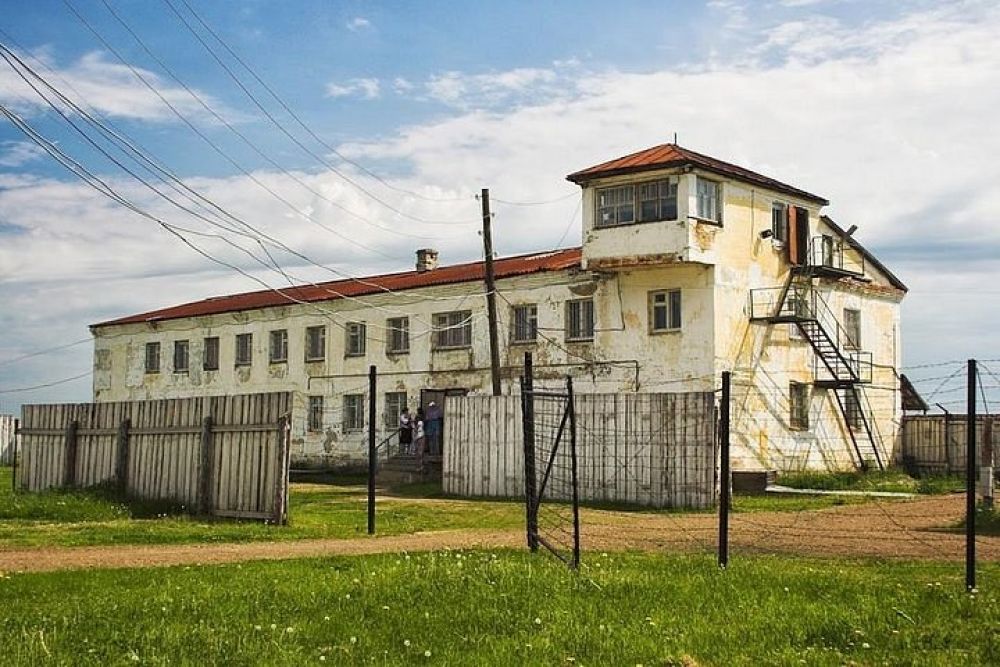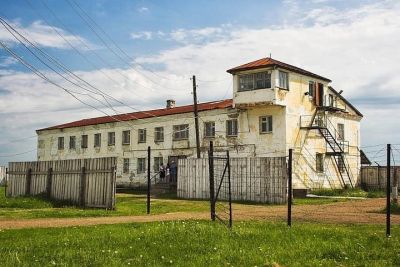

Dive into the chilling history of the Soviet-era at the Perm-36 Memorial Complex, a former labor camp in the Ural region that has been preserved as a stark reminder of political repression. Visitors can opt for a comprehensive guided tour, led by knowledgeable historians who can recount the harrowing tales and day-to-day lives of political prisoners who were incarcerated here during the Stalinist era and beyond. The tour covers the museum exhibitions, including the barracks, solitary confinement cells, and the guard towers offering a visceral glance into the past. You'll learn about the camp's foundation, its function within the Soviet penal system, its prisoners, and its eventual closure following the policy of openness (glasnost) in the late 1980s. The guided tour is both educational and thought-provoking, suitable for visitors interested in history and human rights.
At Perm-36 Memorial Complex, visitors can independently explore the extensive exhibits covering the history of political repression in the Soviet Union. The exhibitions feature photographs, personal belongings of the prisoners, and reconstructive elements that offer poignant insights into the grim history of the camp. Through self-guided exploration, visitors can take their time reading through the information boards and displays at their own pace, giving them the space to fully absorb the heavy history displayed within the museum settings. The experience is enriched by multimedia presentations and documents showcasing the camp's history from its founding to its eventual status as a memorial complex, highlighting the courage of those who opposed the Soviet regime and the importance of maintaining historical memory.
The Memorial Complex Walk offers a poignant stroll through the outdoor areas of Perm-36 where the bleak landscape is interspersed with remnants of the former labor camp's structures. This self-guided walk allows visitors to reflect on the vastness and isolation experienced by the camp's inmates. Key sights include the guard towers, barbed-wire fences, and reconstructed living quarters which help to recreate the atmosphere of the period. Information boards and signage throughout the complex offer historical context and personal stories of the prisoners, providing a deeper understanding of the daily realities faced within the camp. The experience is often moving, as the isolation of the remote Ural setting reinforces the sense of desolation and the magnitude of suffering that occurred at Perm-36.
The Perm-36 Memorial Complex also offers visitors the opportunity to engage with the history of the Soviet penal camp system through a series of captivating documentary screenings. These films are selected to complement the exhibit's themes, featuring firsthand accounts and archival footage that convey the stories of repression, survival, and resistance among political prisoners. Screenings take place in a dedicated audio-visual room within the museum, creating an immersive environment for visitors to gain insight into the broader context of Soviet-era human rights abuses. This activity is ideal for those looking to enrich their understanding of the epoch and complement their visit with powerful visual storytelling. The selection of documentaries may vary, but each aims to provide a resonant, emotional connection to the past.
For individuals fascinated by the processes of preserving historical memory and promoting human rights, the Perm-36 Memorial Complex offers a range of educational workshops. These interactive sessions are designed to foster a deeper understanding of the site's significance and the broader implications of the Soviet Union's political repression. Workshops might include topics such as historical research methods, the role of memorialization in society, and the importance of safeguarding human rights today. Participants are encouraged to engage in discussions, analysis, and reflection, often led by experts in history, sociology, and education. These workshops are particularly beneficial for students, educators, and activists seeking a comprehensive understanding of the camp's legacy and the crucial role that historical sites play in education and civic engagement.
Occasionally, the Perm-36 Memorial Complex hosts special 'Night at the Museum' events which offer a unique nighttime experience of the camp's history. During these events, visitors can explore the complex under the cover of darkness, which adds an eerie and authentic ambiance to the place where countless souls were once detained against their will. The event may include thematic performances, reenactments, or candlelit vigils to honor the memories of political prisoners. Special guided tours and educational programs are often held to deepen the understanding of visitors, providing context and storytelling that resonate strongly when experienced at night. These events are a way to both educate the public and pay homage to the complex's past, offering an emotive and memorable encounter.
In commemoration of those who suffered political repression, the Perm-36 Memorial Complex holds annual events on the Resistance and Remembrance Day. This day of observance includes special museum programs, public talks, and ceremonies. Visitors can attend lectures by historians and survivors, participate in memorial services, and engage in interactive exhibits that are set up throughout the complex. The day aims to foster a communal spirit of remembrance and reflection, ensuring that the lessons of the camp's history are not forgotten. Such observances are crucial in continuing conversations about human rights, resistance against oppression, and the resilience of the human spirit throughout some of the darkest chapters of recent history.
For scholars, historians, and individuals interested in digging deeper into the stories of Perm-36, the complex provides access to archives containing documents, photographs, and personal testimonies related to the Soviet penal system. This activity is ideal for research purposes and allows visitors to engage with primary source materials to gain a more thorough understanding of the historical events and lives impacted by the labor camp. The archival research can be a sobering experience as it provides insights into individual fates and the broader machinations of the gulag system. Assistance from staff may be available to facilitate the research. This activity can form a meaningful part of academic research or personal exploration into the legacies of Soviet repression.
The 'Life of the Camp' permanent exhibit at Perm-36 delves into the daily existence of the prisoners and guards at this notorious labor camp. Through interactive displays and authentic artifacts, visitors can gain a comprehensive view of everyday life, including the harsh working conditions, the meager rations, and the constant struggle for survival and dignity in the face of inhuman treatment. The exhibition presents detailed recreations of living quarters, showcases personal items that belonged to the prisoners, and offers immersive audio testimonies from those who endured the camp's conditions. This deep dive into the camp's 'life' is suitable for anyone keen to understand more about this grim chapter of history and feel connected to the human stories behind the statistics.
The Perm-36 Memorial Complex frequently hosts a variety of art installations and temporary exhibits that provide contemporary perspectives on themes related to political repression, freedom, and memory. These artistic endeavors often involve contributions from both national and international artists and can range from visual art and sculptures to multimedia projects and performance art. Engaging with these exhibits can be a moving experience, as art has the power to translate historical narrative into emotional impact. Visitors are encouraged to reflect on the present-day relevance of the camp's history and the ongoing dialogue between past and present. Art installations and temporary exhibits are an excellent way for visitors to engage with history in an innovative and thought-provoking manner.
